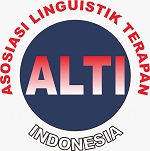Digital Literacy Practices in Language Pedagogy: Blended Learning/Flipped Classroom on English Language Teaching in Indonesia
DOI:
https://doi.org/10.33394/jollt.v12i3.11270Keywords:
Blended Learning, Flipped Classroom, Digital literacy practices, English language teaching, Language pedagogy,Abstract
References
Abeysekera, L. & Dawson, P. (2015). Motivation and cognitive load in the flipped classroom: definition, rationale and a call for research, Higher Education Research and Development, 34(1), 1–14.
Anderson, L., W., and Krathwohl, D. R., et al. (Eds.,) (2001) A Taxonomy for Learning, Teaching, and Assessing: A Revision of Bloom’s Taxonomy of Educational Objectives. Allyn & Bacon. Boston. MA (Pearson Education Group).
Brown H. Douglas. 2000. Teaching by Principles: An Interactive Approach to Language Pedagogy. San Fransisco California.
Brown, H. D. & Lee, H. (2015). Teaching by Principles. Melbourne: Pearson Ed Australia.
Eshet-Alkalai, Y., (2004). Digital Literacy: A Conceptual Framework for Survival Skills in the Digital era; Journal of Educational Multimedia and Hypermedia, 13(1), 93–106.
Evseeva, A. & Solozhenko, A. (2015). Use of Flipped Classroom Technology in Language Learning, Procedia - Social and Behavioral Sciences, 206, 205–209.
Garrison, D. Randy & Kanuka, Heather (2004). Blended learning: Uncovering its transformative potential in higher education, Internet and Higher Education, 7(2), 95–105.
Gilboy, M. Beth; Heinerichs, Scott; Pazzaglia, Gina; (2015) Enhancing student engagement using the flipped classroom, Journal of Nutrition Education and Behavior, 47(1), 109–114.
Goodfellow, R., (2011). Literacy, Literacies, and the digital in higher education, Teaching in Higher Education, 16(1), 131–144.
Hew, Khe Foon; Lo, Chung Kwan; (2018) Flipped classroom improves student learning in health professions education: A meta-analysis; Hew et al.; Lo et al.; BMC Medical Education, 18(1).
Kong, S. Cheung, (2014). Developing information literacy and critical thinking skills through domain knowledge learning in digital classrooms: An experience of practising flipped classroom strategy, Computers, and Education, 78, 160-173.
Kumaradivelu, B. 2006. Understanding Language Teaching from Method to Post Method. Laurence Erlbaum Associates, Inc.
Long, T., Cummins, J.; Waugh, Michael; (2017) Use of the flipped classroom instructional model in higher education: instructors’ perspectives; Long, Taotao; Cummins, John; Waugh, Michael; Journal of Computing in Higher Education, 29(2), 179–200.
López-Pérez, M. Victoria; Pérez-López, M. Carmen; RodrÃguez-Ariza, Lázaro; (2011) Blended learning in higher education: Students' perceptions and their relation to outcomes; Computers and Education, 56(3), 818–826.
Martin, A.; Grudziecki, Jan, (2006), DigEuLit: Concepts and Tools for Digital Literacy Development; Innovation in Teaching and Learning in Information and Computer Sciences, 5(4), 249–267.
Mason, R., (2006). Literacy in the digital age, British Journal of Educational Technology, 37(2), 315–315.
Ng, W. (2012). Can we teach digital natives digital literacy? Computers and Education, 59(3), 1065–1078.
Nunan, D. (1989). Designing Tasks for the Communicative Classroom, Cambridge University Press.
O'Flaherty, J.; Phillips, Craig; (2015) The use of flipped classrooms in higher education: A scoping review, Internet and Higher Education, 25, 85–95.
Owston, R., Wideman, H., Murphy, J. & Lupshenyuk, D. (2008). Blended teacher professional development: A synthesis of three program evaluations, Internet and Higher Education, 11(3-4), 201–210.
Renandya, W. A. & Widodo, H. P. (Eds.). (2016). English Language Teaching Today: Linking Theory and Practice (vol. 5) London: Springer
Richards, J. C., & Theodore S. Rogers. (1986). Approaches and Methods in Language Teaching, Cambridge Language Teaching Library.
Tang, C. M.; Chaw, Lee Yen (2015) Digital literacy and practical learning in the blended learning environment; Tang, Chun Meng; Chaw, Lee Yen; Proceedings of the European Conference on e-Learning, ECEL, 601–610.
Tang, Chun, Meng; Chaw, and Lee Yen (2016) Digital literacy: A prerequisite for effective learning in a blended learning environment?; Electronic Journal of e-Learning, 14(1), 54-65.
Yang, Ya-Ting C. (2015). Virtual CEOs: A blended approach to digital gaming for enhancing higher order thinking and academic achievement among vocational high school students, Computers and Education, 81, 281–295.
Downloads
Published
How to Cite
Issue
Section
Citation Check
License
License and Publishing Agreement
In submitting the manuscript to the journal, the authors certify that:
- They are authorized by their co-authors to enter into these arrangements.
- The work described has not been formally published before, except in the form of an abstract or as part of a published lecture, review, thesis, or overlay journal.
- That it is not under consideration for publication elsewhere,
- That its publication has been approved by all the author(s) and by the responsible authorities – tacitly or explicitly – of the institutes where the work has been carried out.
- They secure the right to reproduce any material that has already been published or copyrighted elsewhere.
- They agree to the following license and publishing agreement.
Copyright
Authors who publish with JOLLT Journal of Languages and Language Teaching agree to the following terms:
- Authors retain copyright and grant the journal right of first publication with the work simultaneously licensed under a Creative Commons Attribution License (CC BY-SA 4.0) that allows others to share the work with an acknowledgment of the work's authorship and initial publication in this journal.Â
- Authors are able to enter into separate, additional contractual arrangements for the non-exclusive distribution of the journal's published version of the work (e.g., post it to an institutional repository or publish it in a book), with an acknowledgment of its initial publication in this journal.
- Authors are permitted and encouraged to post their work online (e.g., in institutional repositories or on their website) prior to and during the submission process, as it can lead to productive exchanges, as well as earlier and greater citation of published work.
Licensing for Data Publication
- Open Data Commons Attribution License, http://www.opendatacommons.org/licenses/by/1.0/ (default)
This work is licensed under a Creative Commons Attribution-ShareAlike 4.0 International License.
















